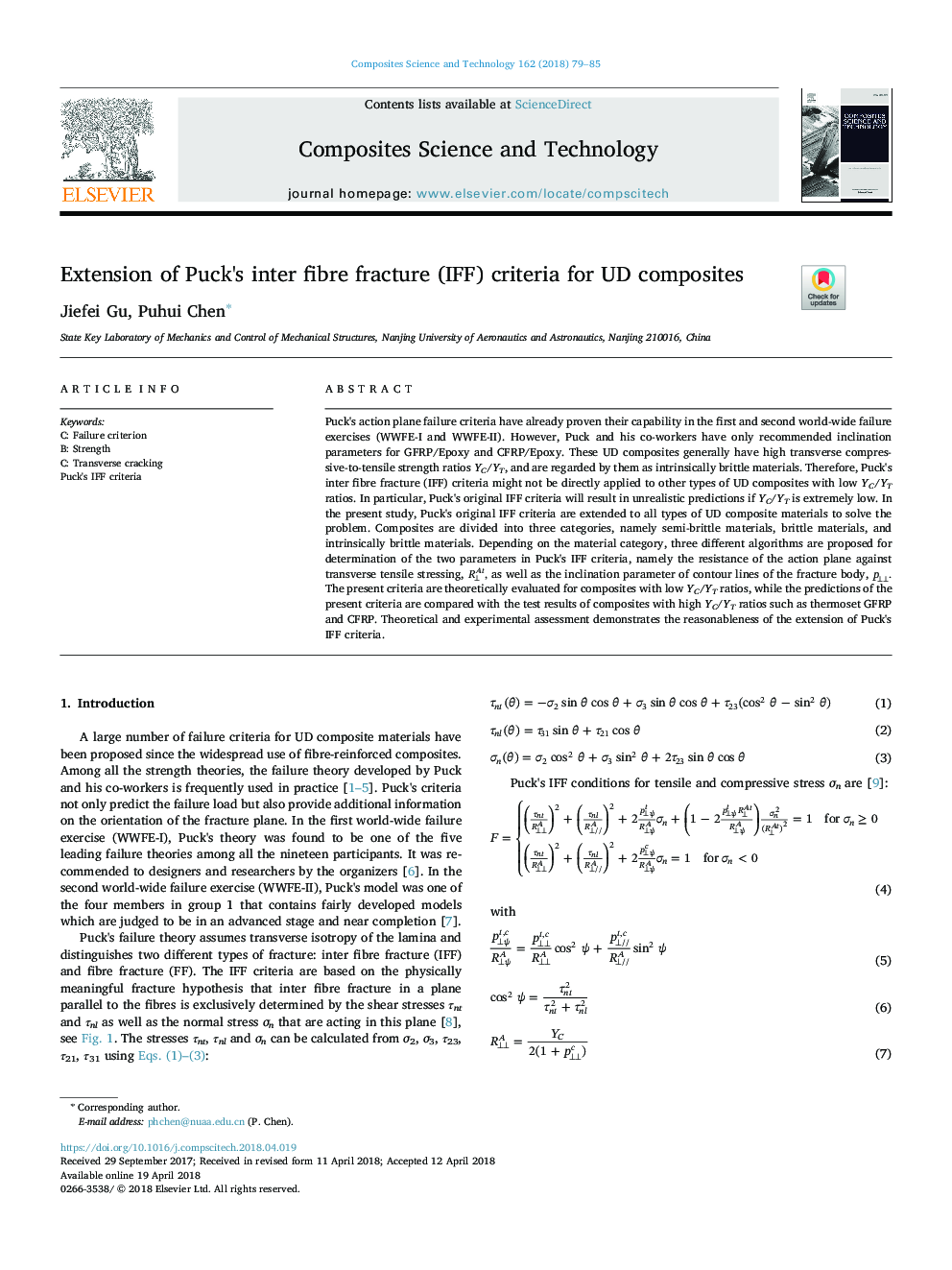| Article ID | Journal | Published Year | Pages | File Type |
|---|---|---|---|---|
| 7214365 | Composites Science and Technology | 2018 | 7 Pages |
Abstract
Puck's action plane failure criteria have already proven their capability in the first and second world-wide failure exercises (WWFE-I and WWFE-II). However, Puck and his co-workers have only recommended inclination parameters for GFRP/Epoxy and CFRP/Epoxy. These UD composites generally have high transverse compressive-to-tensile strength ratios YC/YT, and are regarded by them as intrinsically brittle materials. Therefore, Puck's inter fibre fracture (IFF) criteria might not be directly applied to other types of UD composites with low YC/YT ratios. In particular, Puck's original IFF criteria will result in unrealistic predictions if YC/YT is extremely low. In the present study, Puck's original IFF criteria are extended to all types of UD composite materials to solve the problem. Composites are divided into three categories, namely semi-brittle materials, brittle materials, and intrinsically brittle materials. Depending on the material category, three different algorithms are proposed for determination of the two parameters in Puck's IFF criteria, namely the resistance of the action plane against transverse tensile stressing, Râ¥At, as well as the inclination parameter of contour lines of the fracture body, pâ¥â¥. The present criteria are theoretically evaluated for composites with low YC/YT ratios, while the predictions of the present criteria are compared with the test results of composites with high YC/YT ratios such as thermoset GFRP and CFRP. Theoretical and experimental assessment demonstrates the reasonableness of the extension of Puck's IFF criteria.
Keywords
Related Topics
Physical Sciences and Engineering
Engineering
Engineering (General)
Authors
Jiefei Gu, Puhui Chen,
